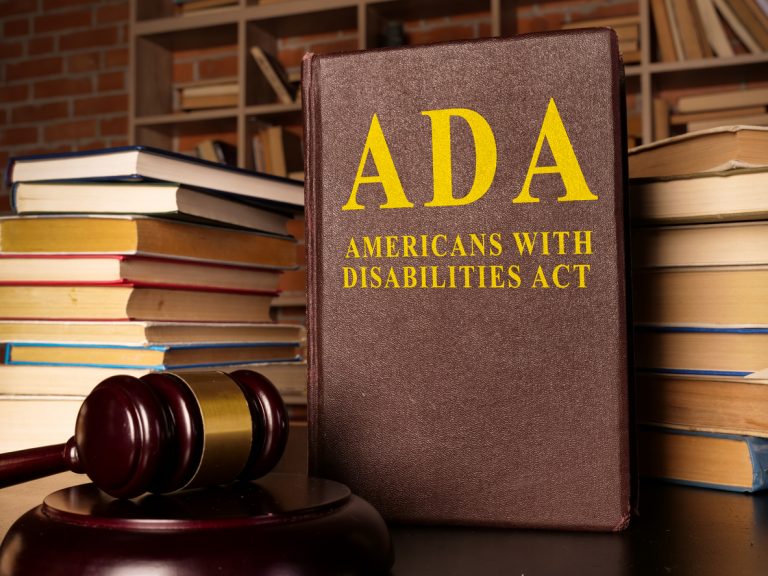
The digital community is gearing up for the next round of updates to the Web Content Accessibility Guidelines (WCAG) with the goal of keeping with ADA compliance. The international standard for digital accessibility, WCAG, is a set of web design and digital access guidelines developed by a global team of digital technologists known as WC3.
Scheduled for release in the fall, version 2.2 aims to make digital content even more accessible to people with disabilities. WCAG 3.0 is due for release in 2023 at the earliest. Both versions expand on the original 2.1 framework released in 2008, adding new criteria and benchmark tests to websites and other digital products.
New WCAG Criteria To Improve Website Navigation for ADA Compliance
The new criteria should improve site appearance and navigation, particularly for web users with disabilities. It also aims to provide site designers, developers, and owners guidelines for conforming to Americans With Disabilities Act (ADA) requirements. Ultimately, WCAG will enable all users to explore web content freely via their choice of technology, regardless of their disability.
The WCAG 2.2 updates include nine new criteria to improve website access and interaction for people with hearing, mobility, or visual impairment. For instance, they could make it simpler for people with color blindness to view on-screen text and images. Among the criteria included in the planned update are the following:
- Accessible authentication
- Dragging movements
- Consistent help
- Page break navigation
- Focus appearance (minimum)
- Focus appearance (enhanced)
- Visible controls
- Target size (minimum)
- Redundant entry
New WCAG Criteria for ADA Compliance
Here are some details about the nine new criteria to be included in the WCAG 2.2 update:
Accessible Authentication
It eliminates cognitive function tests in authentication processes unless there is another authentication method. Images, audio, or video may instead represent objects and users.
Dragging Movements
It proposes that all functions that typically require dragging should be achievable via a single pointer without dragging unless necessary or determined by the user. It will apply to content that interprets pointer actions.
Consistent Help
Help mechanisms on multiple web pages should be in the same order as other page content. Help mechanisms can be provided on-page or on a different, linked page.
Page Break Navigation
It proposes the inclusion of page break locators on a page. These make it easier for visually-impaired users to navigate between relevant points within a page’s content.
Focus Appearance (Minimum)
It addresses problems related to UI components that receive keyboard focus. Including focus indicators will make it easier for users with disabilities to see which elements are currently focused.
Focus Appearance (Enhanced)
It serves the same purpose as the minimum focused appearance criteria. It requires focus indicators to be more easily distinguishable when they are active.
Visible Controls
It makes it possible for users with cognitive, visual, or mobility issues to identify controls without having to mouse over them or focus on them with the keyboard.
Target Size (Minimum)
These enable users to select values spatially based on their position within the target. For example, pages may include granular value sliders, color pickers for color gradients, or editable areas where cursors can go.
Redundant Entry
It proposes that previously entered information be auto-populated in the required field or made available for user selection.
Differences Between WCAG 2.2 and WCAG 3.0
Although WCAG 2.2 and 3.0 are linked, each framework serves different purposes. While 2.2 defines appearance and navigation parameters for ADA compliance, 3.0 should improve website conformance by clearly defining WCAG guidelines. Furthermore, version 3.0 incorporates tests and scoring parameters that determine the accessibility of websites.
WCAG Guidelines for ADA Compliance
It is essential to realize that WCAG 2.2 and 3.0 are simply guidelines or recommendations for ADA compliance. Although there is hope that site owners and administrators will use them to achieve better accessibility conformance, they are also free to ignore them.
That said, site owners and administrators that opt to ignore these guidelines risk facing civil lawsuits for ADA violations. And, of course, government agencies and contractors working for the government must conform to WCAG guidelines.
Keeping Up With The WCAG Guidelines for ADA Compliance
Both WCAG 2.2 and 3.0 are currently in the draft stages and may still be revised. Nevertheless, awareness of the updates will enable site designers and developers to plan how to incorporate them into their digital products.
Furthermore, although private firms have no federal mandate to incorporate the WCAG criteria, there is an increase in civil lawsuits for neglecting ADA obligations. Therefore, keeping updated on these developments could help companies avoid potential legal hassles later on.
Neilson Marketing Services on the Forefront of ADA Compliance
Neilson Marketing Services remains at the forefront of ADA compliance by updating its tool to conform to WCAG regulations more closely. By shaping its digital strategy in accordance with WCAG 2.2 and 3.0, the company is committed to helping clients make their websites and digital products as accessible as possible to a broader range of users.
About Neilson Marketing Services
Since 1988, Neilson Marketing Services has been implementing innovative marketing solutions and strategies for our clients in all areas of marketing. Contact us today at (866) 816-1849 to put our talent, expertise, and vast resources to work for you. Let’s make things happen, together!

